Manual Therapy Online
Technique Peek - Lumbar Segmental Stability Tests
A segmental instability may be symmetrical (anterior or posterior) or asymmetrical (torsional or transverse). The degree of slippage is dependent on the level of instability and the ability of the patient to stabilize the segment, consciously or unconsciously. The stability tests are actually tests to see if non-physiological (movement that should not be present to any appreciable degree) motion is present.
Technique
Anterior
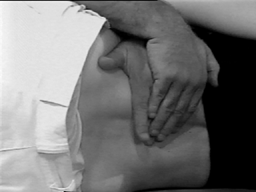
The patient is in side lying with the spine in neutral and the hips flexed to about 70 degrees (45 degrees for the lumbosacral junction) making sure that the spine does not flex as the hips are flexed. This is accomplished by pushing the legs posteriorly as the hips are flexed. The therapist places the patient's knees between his/her thighs and reaches over the legs to apply a lumbrical grip with the cranial hand to the superior vertebra. The index finger of this hand palpates the spinous process of the inferior vertebra. The hand is then reinforced by the caudal hand.

If any movement is perceived, the segment is considered to be anteriorly unstable. The therapist uses a forward pelvic thrust against the patient's knees to shear the femurs, pelvis and lower vertebrae posteriorly against the stabilizing force of the therapist's cranial hand. The index finger on the inferior spinous process palpates for motion between the two spinous processes.
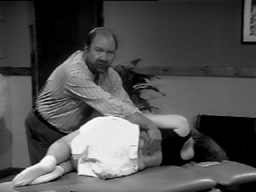
If instability is present, a second test can be carried out. This test is used to determine the ability of the extra-segmental structures to stabilize the segment. It is postulated that the posterior ligamentous system will be able to stabilize the segment if the pelvis is tilted posteriorly thereby tightening the system. Accordingly, the segment is re-tested with same technique but now, the spine is kyphosed by posteriorly rotating the pelvis. If the test is now negative, the patient can be instructed to use this strategy for activities that move the spine into lordosis and the segment into its unstable position.
Posterior
The patient sits over the side of the bed. The therapist stands in front of the patient. The patient holds up both arms flexed at the elbows. The therapist reaches around the patient so that the patient's forearms are pressed against the therapist's chest. The therapist stabilizes the inferior vertebra of the segment with both hands while using one or two index fingers to loosely palpate the superior spinous vertebra. The patient is then asked to very gently push against the therapist chest by protracting the scapulae. The therapist feels for movement of the superior spinous process. If this occurs, the segment is considered to be posteriorly unstable.
Torsion
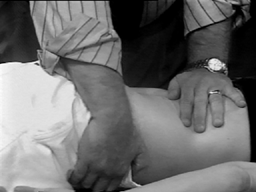
A general torsion test can be carried out for the entire lumbar spine. The paitent lays prone. The therapist stabilizes T12 spinous process with the thumb or thenar region with one hand and grasps the iliac crest with the other. The ilium is then pulled straight backwards. There should be a small amount of motion only and the end feel should be hard and abrupt. The patient should not experience any symptoms. The presence of symptoms only would indicate joint effusion, lamina fractures, minor tearing of the anulus etc. The presence of excessive motion would suggest torsional instability.
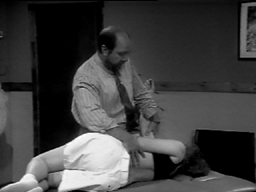
For a more specific evaluation, each segment can be assessed separately. The patient side lays with the spine in neutral. The therapist can then either leave the spine in this position and allow for the small degree of axial (pure) rotation that exists or can very lightly rotate the spine. If the spine is rotated, there will be a small amount of motion felt during the test but if lightly rotated, there should be no rotation available.
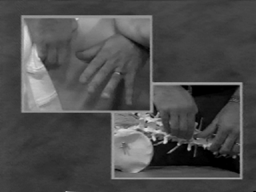
The therapist pushes the superior spinous process towards the bed and pulls the inferior process towards the ceiling thereby producing a torsional force that would tend to produce axial rotation. The force must be transverse and not through an oblique plane. If pre-rotated, there should be no rotation available if not pre-rotated, a small amount of rotation must be allowed for. In both cases, the end feel should be very hard almost bony. There should be no slippage felt.
Featured Course
FREE COURSE
Foundations of Expertise
Date:
Starting March 24, 2024
Location: Online
LEARN MORE



